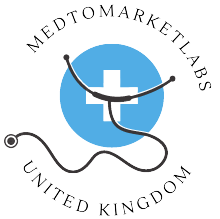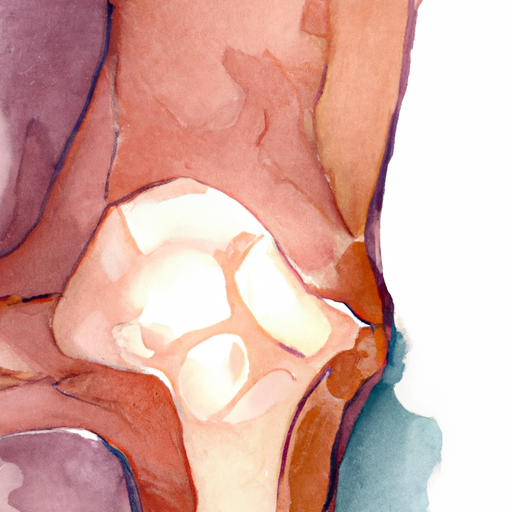Hypertension, commonly known as high blood pressure, is a prevalent medical condition that affects millions of individuals worldwide. It is often referred to as the "silent killer" due to its ability to go unnoticed for an extended period, causing significant damage to the body. In this article, we will delve into the various aspects of hypertension, including its symptoms, causes, and risk factors. We will also explore the different methods used to diagnose hypertension, such as screening methods and diagnostic tests. Lastly, we will examine the numerous treatment options available, as well as lifestyle changes and prevention strategies that can help manage this condition effectively. By gaining a comprehensive understanding of hypertension, we can equip ourselves with the knowledge necessary to lead a healthy and fulfilling life.
1. "Understanding Hypertension: Symptoms, Causes, and Risk Factors"
Hypertension, also known as high blood pressure, is a medical condition that affects millions of people worldwide. It is often called the "silent killer" because it usually has no noticeable symptoms, yet it can have serious consequences if left untreated. Understanding the symptoms, causes, and risk factors associated with hypertension is crucial for early detection and effective management of this condition.
Symptoms of hypertension are often absent or very mild, which makes it difficult for individuals to realize they have high blood pressure. Some people may experience occasional headaches, dizziness, or nosebleeds, but these symptoms are not unique to hypertension and can be caused by various other factors. It is important to note that even if symptoms are not present, the damage to the blood vessels and organs can still occur over time.
The causes of hypertension can be broadly categorized into two types: primary (essential) and secondary. Primary hypertension, which accounts for about 90% of cases, develops gradually over time and is usually influenced by a combination of genetic and lifestyle factors. Secondary hypertension, on the other hand, is caused by an underlying health condition such as kidney disease, hormonal disorders, or certain medications.
Several risk factors increase the likelihood of developing hypertension. Age plays a significant role, as blood pressure tends to rise with age. Other risk factors include obesity, a sedentary lifestyle, excessive alcohol consumption, tobacco use, high salt intake, and a family history of hypertension. Additionally, certain ethnic groups, such as African Americans, are more prone to developing hypertension.
Diagnosing hypertension involves measuring blood pressure using a sphygmomanometer, which consists of an inflatable cuff wrapped around the upper arm. Blood pressure readings are recorded as two numbers: systolic pressure over diastolic pressure. A normal blood pressure reading is typically around 120/80 mmHg. However, a diagnosis of hypertension is made when multiple readings consistently show a blood pressure of 130/80 mmHg or higher.
Once diagnosed, the treatment of hypertension aims to lower and control blood pressure to reduce the risk of complications. Lifestyle modifications form the cornerstone of treatment. This includes adopting a healthy diet, such as the Dietary Approaches to Stop Hypertension (DASH) diet, reducing sodium intake, engaging in regular physical activity, maintaining a healthy weight, limiting alcohol consumption, and quitting smoking.
In some cases, medication may be prescribed to help lower blood pressure. Different classes of antihypertensive drugs, such as diuretics, beta-blockers, angiotensin-converting enzyme (ACE) inhibitors, angiotensin receptor blockers (ARBs), and calcium channel blockers, can be used either alone or in combination to effectively manage hypertension.
In conclusion, hypertension is a common medical condition that often goes unnoticed due to the absence of obvious symptoms. Understanding its symptoms, causes, and risk factors is crucial for early detection and successful management. By adopting a healthy lifestyle, adhering to prescribed medications, and regularly monitoring blood pressure, individuals can effectively control hypertension and reduce the
2. "Diagnosing Hypertension: Screening Methods and Diagnostic Tests"
Diagnosing Hypertension: Screening Methods and Diagnostic Tests
Hypertension, commonly known as high blood pressure, is a chronic medical condition that affects millions of people worldwide. It is often referred to as a silent killer since it usually presents no symptoms until it reaches an advanced stage. Therefore, early detection and diagnosis of hypertension are crucial in order to prevent serious complications such as heart disease, stroke, or kidney failure. In this section, we will explore the various screening methods and diagnostic tests used by healthcare professionals to identify and diagnose hypertension.
Screening for hypertension typically begins with a routine blood pressure measurement. Blood pressure is the force exerted by the blood against the walls of the arteries as the heart pumps it around the body. A standard blood pressure reading consists of two numbers: systolic pressure over diastolic pressure. The systolic pressure represents the force when the heart contracts, while the diastolic pressure reflects the force when the heart is at rest between beats. A blood pressure reading of 120/80 mmHg (millimeters of mercury) is considered normal.
During a screening, a healthcare provider may use a sphygmomanometer, a device that consists of an inflatable cuff and a pressure gauge, to measure blood pressure. The cuff is wrapped around the upper arm, and the gauge displays the pressure in millimeters of mercury. This non-invasive and quick procedure provides an initial assessment of blood pressure levels. However, it is important to note that a single reading may not be sufficient for an accurate diagnosis of hypertension.
If an individual’s blood pressure reading is consistently higher than normal, further diagnostic tests may be recommended. One such test is ambulatory blood pressure monitoring (ABPM). This test involves wearing a portable blood pressure monitor for 24 hours, which automatically measures blood pressure at regular intervals throughout the day and night. ABPM provides a more comprehensive picture of an individual’s blood pressure patterns, taking into account variations that may occur during different activities and sleep.
Additionally, a healthcare provider may order a blood test to evaluate the overall health and identify any underlying conditions that could contribute to hypertension. This blood test may include measuring cholesterol levels, blood sugar levels, and kidney function. Elevated cholesterol levels and uncontrolled diabetes are known risk factors for developing hypertension. Kidney diseases, such as chronic kidney disease, can also lead to high blood pressure.
In some cases, additional diagnostic tests may be necessary to determine the underlying cause of hypertension. These tests may include an electrocardiogram (ECG) to assess heart function, an echocardiogram to evaluate the structure and function of the heart, or a renal ultrasound to examine the kidneys. These tests help healthcare professionals to identify any specific abnormalities or conditions that may be contributing to high blood pressure.
In conclusion, early diagnosis of hypertension is crucial for effective management and prevention of complications. Screening methods such as blood pressure measurements provide an initial assessment, while diagnostic tests like ABPM and blood tests offer a more comprehensive evaluation. By detecting hypertension early and understanding its underlying causes
3. "Managing Hypertension: Treatment Options, Lifestyle Changes, and Prevention Strategies"
Hypertension, commonly known as high blood pressure, is a chronic medical condition that affects millions of people worldwide. Although it often goes unnoticed, uncontrolled hypertension can lead to serious health complications such as heart disease, stroke, and kidney problems. Fortunately, there are several treatment options, lifestyle changes, and prevention strategies that can help manage hypertension effectively.
1. Treatment Options:
When it comes to treating hypertension, healthcare professionals may recommend one or a combination of the following approaches:
– Medications: Antihypertensive drugs, such as diuretics, beta-blockers, ACE inhibitors, angiotensin receptor blockers (ARBs), calcium channel blockers, and others, are commonly prescribed to lower blood pressure. The choice of medication depends on individual circumstances and any underlying health conditions.
– Lifestyle Modifications: In addition to medications, making certain lifestyle changes can significantly contribute to blood pressure control. These changes include adopting a healthy diet, reducing salt intake, limiting alcohol consumption, quitting smoking, maintaining a healthy weight, and engaging in regular physical activity.
– Complementary Therapies: Some individuals may find complementary therapies, such as acupuncture, meditation, or yoga, beneficial in managing hypertension. However, it is important to consult with a healthcare professional before incorporating these therapies into the treatment plan.
2. Lifestyle Changes:
Implementing lifestyle modifications can play a crucial role in managing hypertension. Here are some key lifestyle changes that can help lower blood pressure levels:
– Dietary Approaches: Following the Dietary Approaches to Stop Hypertension (DASH) diet, which emphasizes fruits, vegetables, whole grains, lean proteins, and low-fat dairy products, can aid in reducing blood pressure. Additionally, reducing the consumption of processed foods, saturated fats, and sugary beverages is highly recommended.
– Salt Restriction: Limiting sodium intake is vital for individuals with hypertension. The American Heart Association suggests consuming less than 2,300 milligrams (mg) of sodium per day, but ideally, aiming for an intake of no more than 1,500 mg per day is advised.
– Regular Exercise: Engaging in regular physical activity is beneficial for overall cardiovascular health, including blood pressure management. Aim for at least 150 minutes of moderate-intensity aerobic exercise per week, or 75 minutes of vigorous-intensity exercise, along with strength training exercises twice a week.
– Stress Management: Chronic stress can contribute to hypertension. Taking steps to manage stress through techniques such as deep breathing exercises, meditation, or engaging in hobbies can have a positive impact on blood pressure levels.
3. Prevention Strategies:
Preventing hypertension or its progression is crucial for maintaining optimal health. Here are some effective strategies for preventing hypertension:
– Regular Blood Pressure Checks: Periodically monitoring blood pressure can help identify any changes or spikes early on. Regular check-ups with healthcare professionals can facilitate early detection and prompt intervention if necessary.
– Healthy Lifestyle Habits: Adopting a healthy lifestyle, including maintaining a balanced diet, engaging in regular physical activity, managing stress, limiting alcohol consumption, and avoiding smoking

